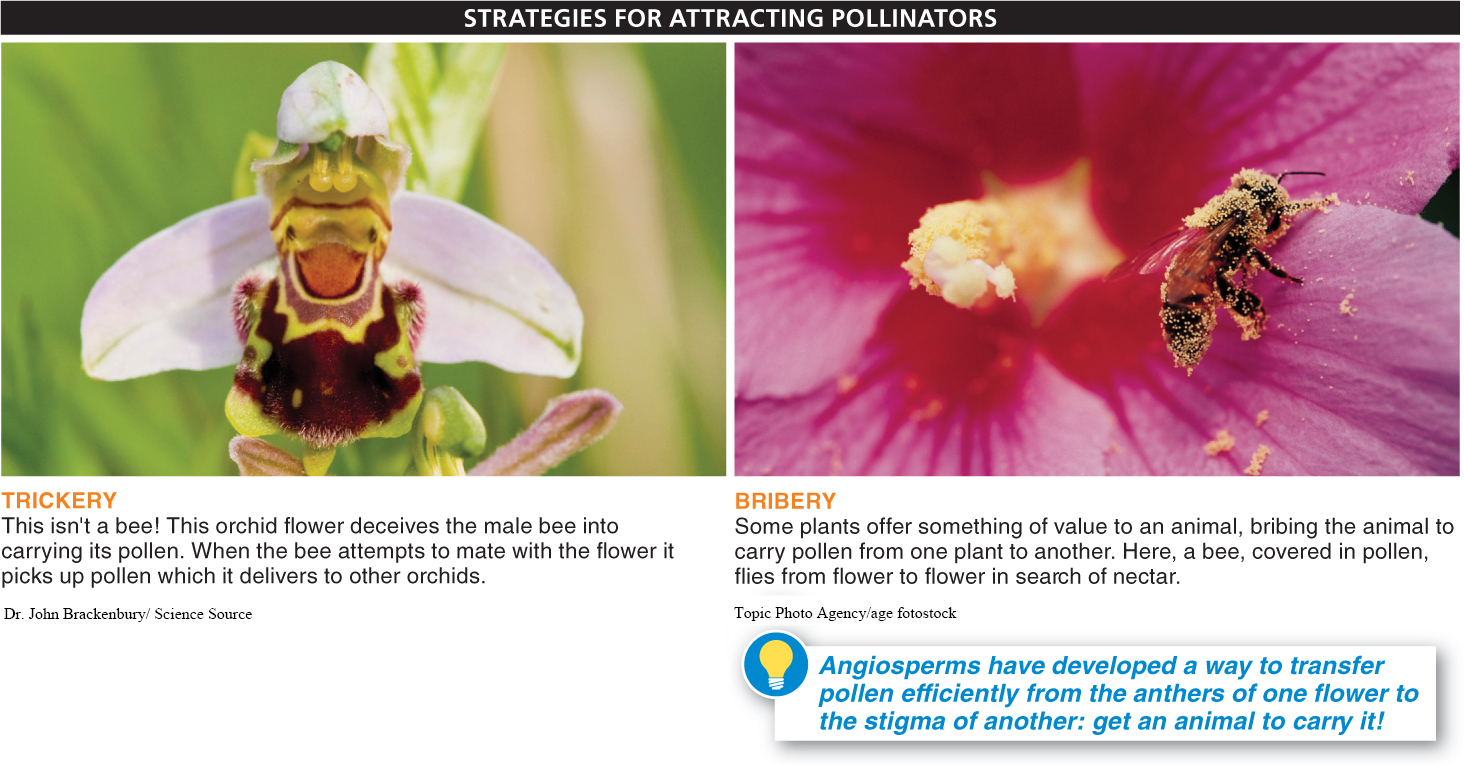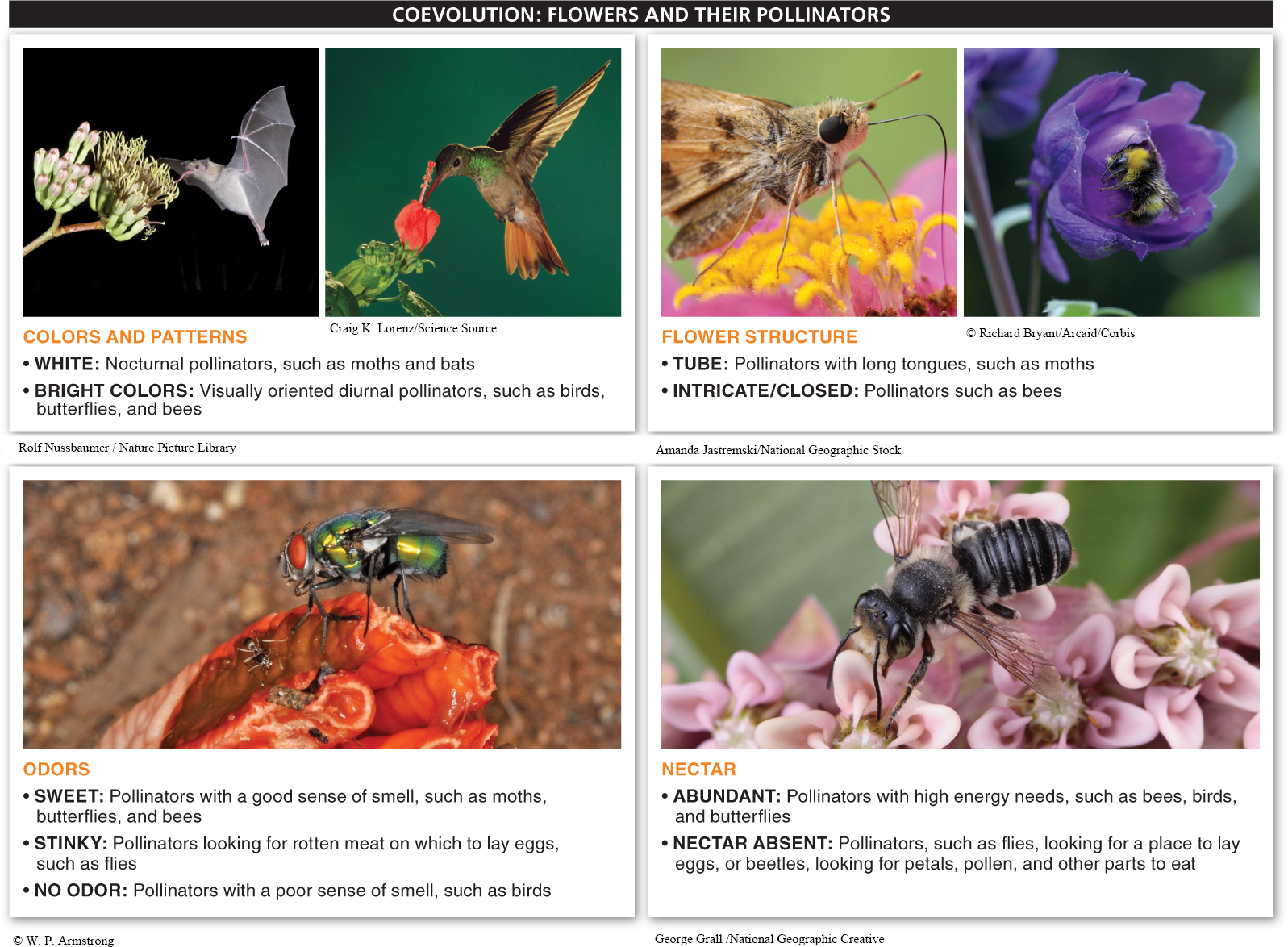12.0.5 12.9: A flower is nothing without a pollinator.
Picture a flower. What does it look like? Flowers differ hugely from one to another, and we all have our favorites. There are giant sunflowers, colorful roses, and some rotten-
Fertilization occurs when the male gamete merges with the female gamete. But that’s a lot easier said than done: the male gamete has to get to where the female gamete is. The first step toward this is pollination—
A small number of angiosperms achieve pollination by releasing tremendous amounts of pollen into the wind, as do the gymnosperms, or into water—

To ensure that animals will visit a flower, picking up and delivering their pollen cargo, two strategies for achieving pollination have evolved among the flowering plants.
Q
Question 12.4
Why are some flowers so flashy?
1. Trickery. The plant deceives some animals into carrying its pollen from one plant to another. Some orchid species, for example, produce flowers that resemble female wasps. The mimicry is so good that male wasps mount the flower and attempt to mate with it. The male wasp twirls wildly on the flower, like a cowboy on a bucking bronco, repeatedly whacking his head against the strategically located anthers and getting pollen stuck all over his head and body. That is not enough for the plant to achieve pollination—
2. Bribery. The plant bribes some animals to carry its pollen from one plant to another. Rather than just using trickery, the plant offers something of value to the animal. For this mutually beneficial method (a “mutualism”; see Section 15-
511
The variety of flower structures is tremendous. They differ in shape, color, smell, time of day they are open, whether or not they produce nectar, and whether or not their pollen is edible. Pollinators also vary widely and include birds (mostly hummingbirds), bees, flies, beetles, butterflies, moths, and even some mammals (mostly bats) (FIGURE 12-22). In each case, there has been strong coevolution between the plants and their pollinators: the plants become increasingly effective at attracting the pollinators and deterring other species from visiting the flower, while the pollinators become increasingly effective at exploiting the resources offered by the plants. Because of this strong coevolution between the plant and animal species, for most flowers we can determine, just by examining the features of the flower, the type of animal that will pollinate it.

Pollination is just one step toward fertilization. Fertilization itself doesn’t happen until the male and female sex cells meet and fuse. We explore this process in the next section.
TAKE-HOME MESSAGE MESSAGE 12.9
Angiosperms rely on animals to carry pollen from the anthers of one flower to the stigma of another. Flowers are conspicuous structures that advertise their presence with colors, shapes, patterns, and odors. Using flowers, plants are able to trick or bribe animals into transporting male gametes to female gametes, where fertilization can occur.
Flowering plants use bribery as well as trickery as strategies for attracting pollinators. What is the key difference between bribery and trickery from the animal’s perspective?
512